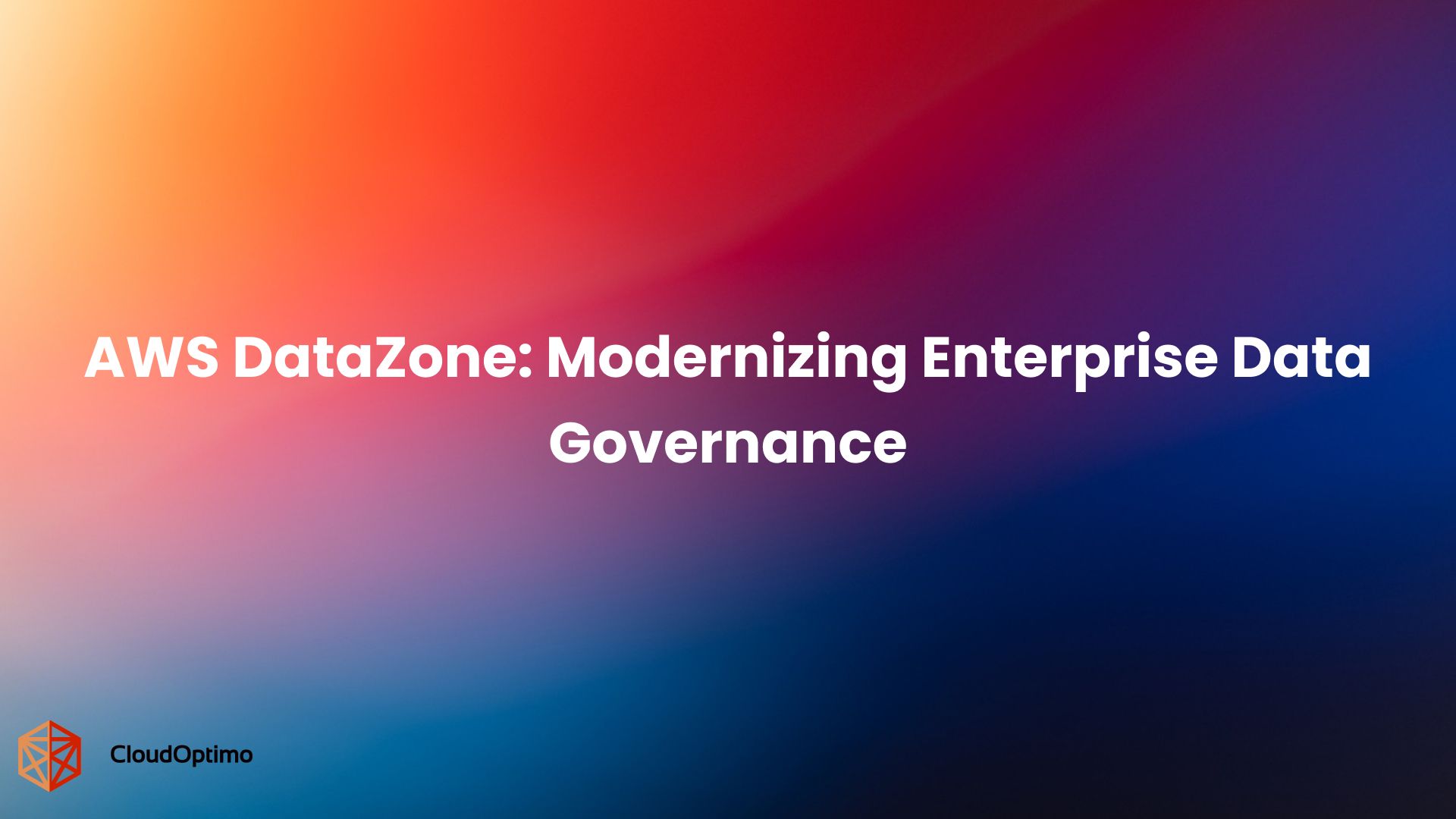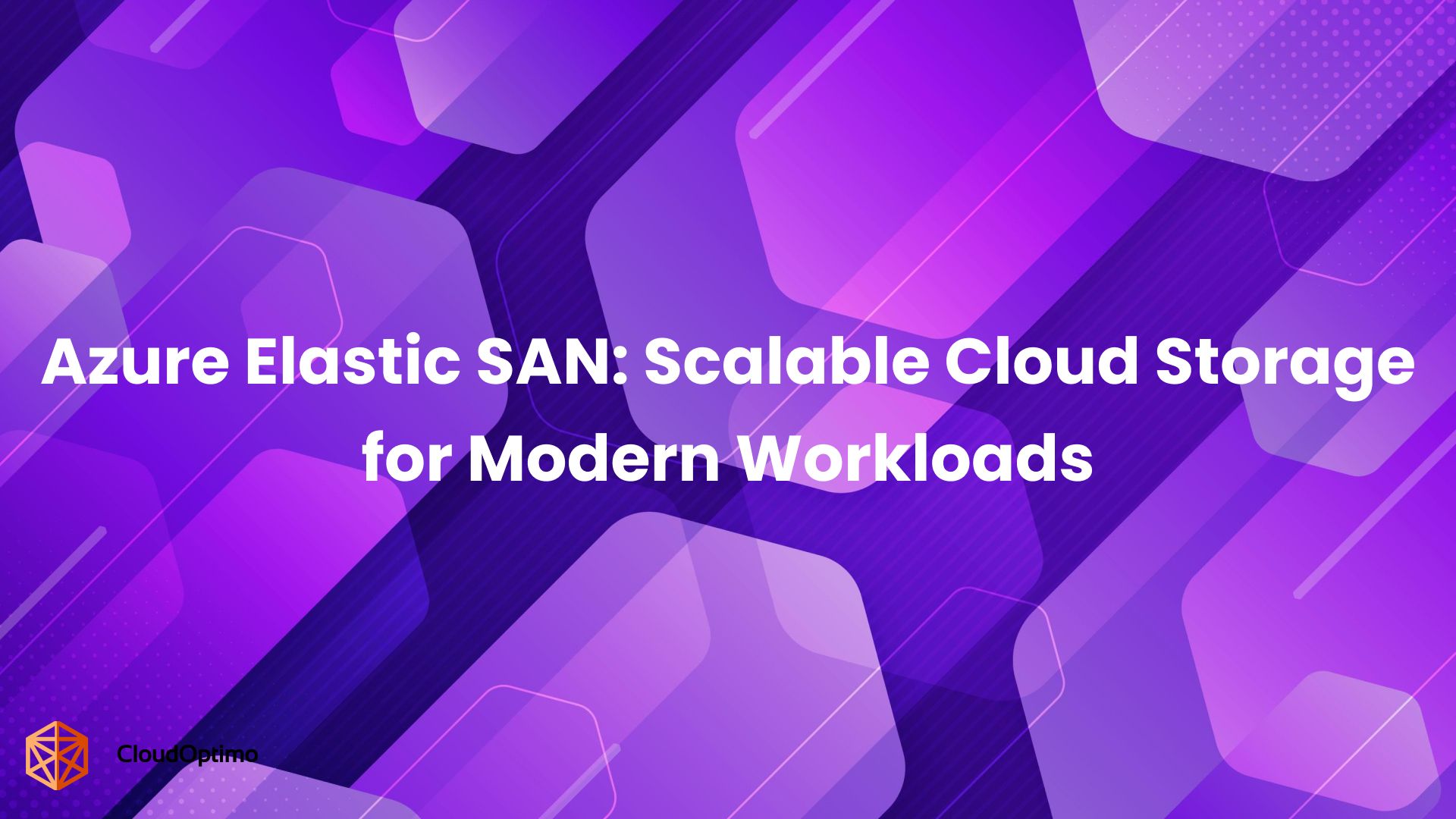Are your AWS EMR costs spiraling out of control? You're not alone. Many organizations struggle to keep their big data processing expenses in check. We've compiled a list of the top 15 tricks and tips that will help you dramatically reduce your AWS EMR costs without compromising on performance.
Quick EMR Pricing Recap
Before we dive into the cost-saving tips, let's quickly recap EMR pricing:
| Component | Pricing Model | Description |
| EC2 Instance Costs | Per-second billing | Charges for EC2 instances in your EMR cluster |
| EMR Charges | Per-second billing | Additional charges for EMR service |
| S3 Storage | Pay-per-use | Costs for storing data in S3 buckets |
| EBS Volumes | Per GB-month | Charges for EBS volumes attached to EMR instances |
For detailed pricing information, refer to our EMR Pricing Blog.
Now, let's explore the top 15 tricks to help you reduce these costs effectively. We've grouped these tricks into six categories: Resource Management, Storage Optimization, Cluster and Resource Efficiency, Performance Tuning, Cost Visibility and Control, and Spot Instance Usage.
Top 15 Tricks to Reduce AWS EMR Costs
Resource Management
- Optimize Cluster Sizing
Strategy: Start with a minimal configuration and scale as needed.
Implementation:
- Begin with a conservative cluster size
- Utilize EMR's resize functionality to adjust cluster size based on workload
- Monitor job metrics and resource utilization to determine optimal size
| aws emr modify-instance-groups --cluster-id j-XXXXXXXX --instance-groups InstanceGroupId=ig-XXXXXXXX,InstanceCount=10 |
Cost Savings: Proper cluster sizing can reduce costs by 20-40% by eliminating idle resources.
Real-world example:
- Company: E-commerce giant
- Action: Implemented dynamic cluster sizing based on daily traffic patterns
- Result: 35% reduction in EMR costs without impacting performance
Challenges:
- Determining optimal size for variable workloads
- Balancing cost savings with performance requirements
Applicability: Most effective for workloads with predictable patterns, QA, Staging (non-critical) environments, or those that can tolerate some processing delay.
- Implement EMR Managed Scaling
Strategy: Allow AWS to automatically adjust your cluster size based on workload.
Implementation:
- Enable Managed Scaling when creating or modifying a cluster
- Define appropriate minimum and maximum limits for core and task nodes
- Establish scaling policies based on YARN memory or HDFS utilization
Cost Savings: Autosizing EMR capacity through Managed Scaling based on resource utilization patterns could result in a 30-50% reduction in the original cluster cost.
Advanced Topic: Custom scaling policies using AWS Lambda and CloudWatch metrics for fine-grained control.
Challenges:
- May not react quickly enough for rapid demand spikes
- Requires careful tuning of scaling policies
Applicability: Ideal for workloads with variable but somewhat predictable resource needs.
Transitioning from resource management to storage optimization, let's explore how efficient data storage can further reduce your EMR costs.
2. Storage Optimization
- Enhance Data Storage Efficiency
Strategy: Employ compression and efficient file formats to reduce storage costs and improve performance.
Implementation:
- Compress data using formats such as Parquet, ORC, or Avro
- Implement data partitioning to reduce scan times.
- Utilize columnar storage formats for analytical workloads
Implementation Using Spark
| df.write.partitionBy("date").parquet("s3://your-bucket/data/", compression="snappy") |
- File format comparison:
| Format | Compression Ratio | Query Performance | Write Performance |
| CSV | 1x (baseline) | Poor | Excellent |
| Parquet | 2x - 4x | Excellent | Good |
| ORC | 2x - 4x | Excellent | Good |
| Avro | 1.5x - 3x | Good | Excellent |
- Real-world example:
- Company: Social media analytics provider
- Action: Switched from raw JSON to partitioned Parquet files
- Result: 70% reduction in S3 storage costs and 5x improvement in query performance
- Challenges:
- Choosing the right format and compression codec for your use case
- Migrating existing data to new formats
Applicability: Universally beneficial, particularly for large datasets with analytical workloads.
- Optimize S3 Storage Costs
Strategy: Select the appropriate S3 storage class for your EMR data.
Implementation:
- Implement S3 Intelligent-Tiering for data with varying access patterns
- Utilize S3 Glacier for long-term storage of infrequently accessed data
- Configure lifecycle policies to automatically transition data between storage classes
Cost Savings: Optimizing S3 storage classes can reduce storage costs by 30-70% depending on data access patterns.
Real-world example:
- Company: Genomics research institute
- Action: Implemented S3 Intelligent-Tiering for raw sequencing data
- Result: 45% reduction in storage costs without workflow changes
Trade-offs:
- Lower storage costs vs. potential higher latency or retrieval fees
- Requires careful consideration of data access patterns
Applicability: Most effective for organizations with large amounts of data and varying access patterns.
Moving from storage to cluster and resource Efficiency, let's see how improved management practices can further optimize your EMR costs.
3. Cluster and Resource Efficiency
- Leverage EMR Notebooks for Development
Strategy: Use EMR Notebooks for cost-effective development and testing.
Implementation:
- Select smaller instance types for development work
- Implement auto-stop policies to terminate idle notebook instances
- Encourage notebook sharing among team members to reduce the number of active instances
Implementation (auto-stop policy):
| { "Rules": [ { "Name": "Auto-stop idle notebooks", "Action": { "Type": "AUTO_STOP" }, "Trigger": { "TimeoutInMinutes": 60 } } ] } |
Real-world example:
- Company: Financial services data science team
- Action: Implemented EMR Notebooks with auto-stop policies
- Result: 60% reduction in development cluster costs
Challenges:
- Encouraging team adoption of shared resources
- Configuring auto-stop policies without interrupting long-running jobs
Applicability: Particularly useful for data science and analytics teams requiring interactive development environments.
- Implement Cluster Auto-termination
Strategy: Automatically terminate clusters to prevent unnecessary idle time charges.
Implementation:
- Use the aws emr create-cluster command with the --auto-terminate option
- Configure a step to terminate the cluster after job completion
- Develop custom auto-termination scripts using the EMR API
| aws emr create-cluster --auto-terminate --steps Type=CUSTOM_JAR,Name=CustomJAR,ActionOnFailure=TERMINATE_CLUSTER,Jar=s3://mybucker/myjar.jar |
Cost Savings: Auto-termination can eliminate up to 100% of idle cluster costs, which can account for 20-30% of total EMR expenses in some organizations.
Real-world example:
- Company: Advertising analytics provider
- Action: Implemented auto-termination for daily reporting clusters
- Result: 25% reduction in monthly EMR costs
Challenges:
- Ensuring all necessary tasks complete before shutdown
- May not suit clusters needing to maintain state between job runs
Applicability: Most effective for batch processing workloads with clear start and end times.
- Explore EMR on EKS
Strategy: Run EMR workloads on Amazon EKS for improved resource utilization.
Implementation:
- Set up an Amazon EKS cluster
- Configure EMR on EKS
- Implement node auto-scaling to adjust the EKS cluster size based on demand
Cost Savings: EMR on EKS can reduce costs by 20-40% through improved resource sharing and utilization.
Real-world example:
- Company: Large retail corporation
- Action: Migrated EMR workloads to EKS
- Result: 30% reduction in overall infrastructure costs and 50% improvement in resource utilization
Trade-offs:
- Improved resource sharing vs. increased complexity
- Requires Kubernetes expertise
Applicability: Most beneficial for organizations already using or planning to use Kubernetes.
As we transition from operational efficiency to performance tuning, remember that optimizing job performance improves processing times and significantly reduces costs by minimizing resource usage.
4. Performance Tuning
- Monitor Key Metrics with CloudWatch
Strategy: Set up CloudWatch alarms to detect cost anomalies early.
Key metrics to monitor:
- YARNMemoryAvailablePercentage
- HDFSUtilization
- ContainerPendingRatio
Cost Savings: Proactive monitoring can prevent cost overruns of 15-25% by identifying issues early.
Real-world example:
- Company: Data processing firm
- Action: Set up CloudWatch alarms for YARN memory usage
- Result: Identified and fixed a memory leak, preventing a 30% cost overrun
Challenges:
- Setting appropriate alert thresholds
- Balancing alerting frequency to avoid alarm fatigue
Applicability: Crucial for all EMR users, especially those with large-scale or mission-critical workloads.
- Optimize Job Configurations
Strategy: Fine-tune EMR job configurations for improved resource utilization.
Areas to focus on:
- Adjust executor memory and cores
- Optimize shuffle operations
- Use appropriate compression codecs
- Tune garbage collection settings
Implementation (Spark configuration example):
| --conf spark.dynamicAllocation.enabled=true --conf spark.shuffle.service.enabled=true --conf spark.dynamicAllocation.executorIdleTimeout=60s |
Cost Savings: Job optimization can reduce processing times and resource usage by 20-50%, directly translating to cost savings.
Advanced Topic: Consider using Apache Tez for query optimization in Hive workloads, which can improve performance by 2x-10x in many scenarios.
Real-world example:
- Company: Financial data analytics provider
- Action: Optimized Spark configurations for their main processing job
- Result: 40% reduction in job runtime and 25% decrease in EMR costs
Challenges:
- Requires deep understanding of the specific workload and EMR/Spark internals
- Configuration changes may have unintended consequences on job behavior
Applicability: Beneficial for all EMR users, but particularly impactful for organizations with long-running or resource-intensive jobs.
- Select Appropriate Instance Types
Strategy: Choose optimal instance types that align with your workload characteristics.
Guidelines:
- Utilize compute-optimized instances (C5, C6g) for CPU-intensive workloads
- Select memory-optimized instances (R5, R6g) for memory-intensive applications
- Consider general-purpose instances (M5, M6g) for balanced workloads
- Employ GPU instances (P3, G4dn) for machine learning tasks
Cost Savings: Proper instance selection can reduce costs by 15-30% by aligning resources with workload requirements.
Advanced Topic: Consider using custom AMIs with pre-installed dependencies to reduce cluster startup times and costs.
5. Cost Visibility and Control
- Implement Cost Allocation Tags
Strategy: Use tagging to accurately track and allocate costs.
Implementation:
- Develop a comprehensive tagging strategy (e.g., by project, team, or application)
- Apply tags consistently across all EMR resources
- Utilize AWS Cost Explorer to analyze costs based on tags
Cost Savings: While tagging doesn't directly reduce costs, it can lead to 10-20% savings by improving cost visibility and accountability.
- Utilize AWS Budgets
Strategy: Establish budgets and alerts to maintain control over EMR costs.
Implementation:
- Create separate budgets for EMR service charges and EC2 costs
- Set up alert thresholds at 50%, 80%, and 100% of your budget
- Configure actions to automatically optimize resource allocation or adjust instance types when budgets are exceeded, ensuring cost savings without disrupting workflows.
- Tools like AWS Cost Explorer and AWS Budgets or CostSaver by CloudOptimo offer insights into your EMR usage and help identify areas for potential cost savings.
Cost Savings: Implementing strict budgets and alerts can prevent overspending by 10-20% in many organizations.
- Conduct Regular Reviews and Optimizations
Strategy: Make cost optimization an ongoing process.
Implementation:
- Schedule monthly cost review meetings
- Analyze usage patterns and identify optimization opportunities
- Stay informed about new EMR features and pricing options
- Conduct A/B tests to compare different cost-saving strategies
Cost Savings: Regular optimization efforts can lead to ongoing cost reductions of 5-10% year-over-year.
6. Spot Instance Optimization
- Utilize Spot Instances Reliably
Strategy: Leverage Spot Instances for task nodes (in some scenarios for Core nodes as well) to achieve significant cost savings.
Implementation:
- Configure your EMR cluster to use Spot Instances for task nodes
- Employ Instance Fleets to combine On-Demand and Spot Instances
- Set a maximum Spot price to control costs
Cost Savings: Using Spot Instances can reduce costs by up to 40% compared to On-Demand pricing by leveraging CloudOptimo’s OptimoMapReducer
Real-world example:
- Company: Data analytics firm
- Action: Used Spot Instances for nightly batch processing jobs
- Result: 40% reduction in compute costs
Trade-offs:
- Cost savings vs. potential job interruptions
- Requires implementing robust interruption handling mechanisms
Applicability: Ideal for fault-tolerant, flexible workloads that can handle interruptions.
- Implement Spot Instance Interruption Handling
Strategy: Design EMR applications to manage Spot Instance interruptions effectively.
Implementation:
- Use YARN node labels to run critical jobs on On-Demand Instances
- Implement checkpointing in your applications
- Configure automatic Spot Instance replacement
Cost Savings: Effective interruption handling can increase Spot Instance usage by 20-40%, leading to significant cost reductions.
Synergies and Conflicts
Many of these strategies work well together. For example:
- Combining Spot Instances with effective interruption handling maximizes cost savings while maintaining reliability.
- Implementing EMR Managed Scaling complements proper instance selection for optimal resource utilization.
However, some strategies may conflict:
- Aggressive auto-termination might interfere with EMR Notebooks usage if not carefully managed.
- Over-optimization of job configurations might lead to reduced flexibility when using Spot Instances.
Measuring the Impact of Optimizations
To quantify the impact of these cost-saving strategies:
- Establish a baseline: Record your EMR costs and performance metrics before implementing changes.
- Implement changes incrementally: Apply optimizations one at a time to isolate their impact.
- Use AWS Cost Explorer: Track your EMR costs over time and compare them to your baseline.
- Monitor performance metrics: Ensure cost reductions don't negatively impact job performance.
- Calculate ROI: Determine the return on investment for each optimization strategy.
Example calculation:
- Baseline monthly EMR cost: $10,000
- Cost after implementing Spot Instances: $7,000
- Monthly savings: $3,000
- Implementation cost (one-time): $5,000
- ROI break-even point: Less than 2 months
By implementing these 15 strategies, you can significantly reduce your AWS EMR costs while maintaining or even enhancing performance. Remember that cost optimization is an ongoing process. Regularly review your EMR usage, stay informed about new features, and continuously refine your approach to ensure your big data workloads remain cost-effective and efficient.
FAQs
Q: How do custom AMIs help in reducing EMR costs?
A: Custom AMIs can pre-install commonly used libraries and dependencies, reducing cluster startup times and the associated costs. They can also include optimized configurations tailored to your specific workloads.
Q: What is Apache Tez, and how does it optimize query performance?
A: Apache Tez is a data processing framework that can significantly improve the performance of Hive queries. It optimizes complex query plans and reduces the number of MapReduce jobs, leading to faster execution times and lower resource usage.
Q: How does EMR on EKS differ from standard EMR clusters?
A: EMR on EKS allows you to run EMR workloads on Kubernetes clusters, providing better resource sharing, isolation, and scaling capabilities. This can lead to improved utilization and potential cost savings, especially for organizations already using EKS.
Q: What are some advanced YARN configurations that can help optimize costs?
A: Advanced YARN configurations include setting appropriate container sizes, configuring node label expressions for resource allocation, and implementing capacity scheduling. These can help improve resource utilization and job performance, ultimately reducing costs.
Q: How can organizations effectively balance cost optimization with performance requirements?
A: Balancing cost and performance requires careful monitoring, regular testing, and a deep understanding of workload characteristics. Implement a robust monitoring system, conduct regular performance benchmarks, and use techniques like A/B testing to find the optimal balance for your specific use cases.





